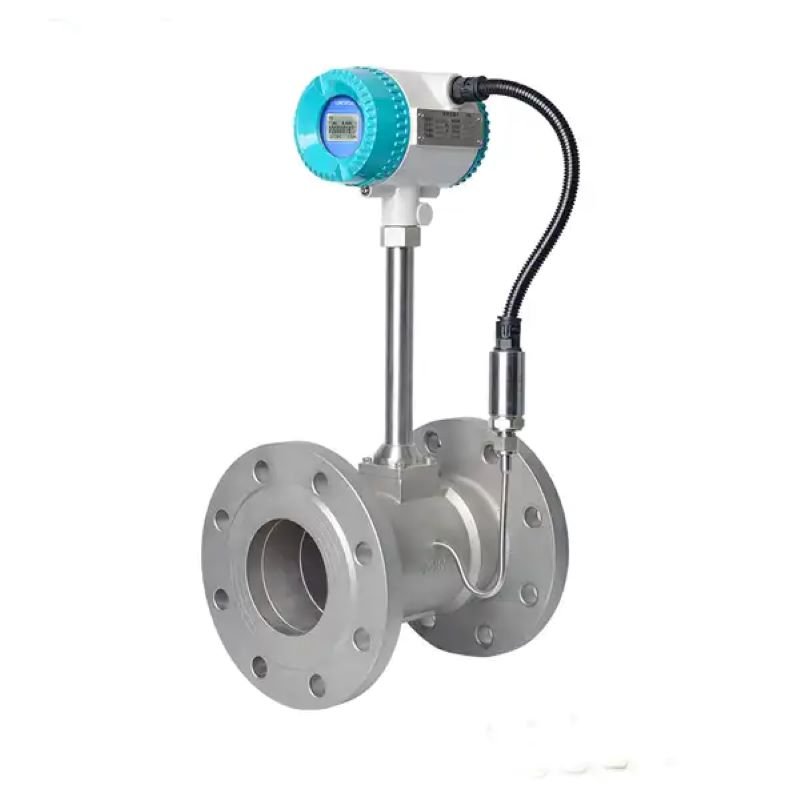When installing a steam flow meter, several key requirements must be met to ensure optimal performance, accuracy, and long-term reliability. These requirements cover the installation position, pipeline dimensions, and environmental factors. Below is a detailed guide on the essential conditions for the proper installation of steam flow meters.
1. Installation Position and Orientation
- Horizontal Installation: It is crucial to install the steam flow meter horizontally in the pipeline. The tilt angle of the pipeline should not exceed 5° (though some guidelines may allow up to 50°). The flow meter’s axis should align with the pipeline axis, and the direction of flow must be consistent with the flow meter’s design specifications.
- Installation Sequence: In the absence of specific user requirements, larger pipelines should be installed before smaller ones, and main pipelines should be installed before branch lines. Ideally, steam flow meters should be installed underground. If underground installation is not feasible, above-ground installation may be considered.
2. Straight Pipe Section Requirements
- Upstream and Downstream Straight Pipe Lengths: For accurate measurements, the length of the upstream straight pipe should be at least 10 times the internal diameter of the flow meter (10D). If space allows, it is recommended to extend the upstream straight section to 20D and the downstream straight section to 5D. This ensures the fluid flow stabilizes before and after the meter, minimizing turbulence that could affect measurement accuracy.
- Pipeline Diameter: The pipeline diameter upstream and downstream of the flow meter should be the same as the meter’s internal diameter. Mismatched diameters can cause flow disturbances that lead to measurement errors.
3. Bypass and Isolation Valves
- Bypass Pipeline: To allow for maintenance without interrupting steam flow, it is necessary to install isolation valves (such as gate valves) both before and after the steam flow meter, along with a bypass pipeline. This configuration ensures that the meter can be serviced without shutting down the steam system.
- Flow Control Valve: The flow control valve should be positioned downstream of the flow meter. When in use, the isolation valves upstream of the flow meter must be fully opened to prevent partial flow restrictions that could cause instability in the fluid flow.
4. Environmental Conditions and Protective Measures
- Installation Location: The flow meter should be installed in a location that is easily accessible for maintenance and free from sources of strong electromagnetic interference or excessive heat radiation. If the installation is outdoors, the site should have protection from the sun, rain, and lightning to extend the life of the flow meter.
- Ingress Protection (IP) Rating: The appropriate IP protection level should be selected based on the meter’s installation location and environmental conditions. For indoor installations, an IP65 rating is typically sufficient. For installations above ground in outdoor settings, an IP67 or higher rating is recommended. In cases where the meter is installed below ground, such as in trenches, an IP68 rating should be used.
5. Welding and Pipeline Cleaning
- Flange Installation: Standard flanges should be welded onto both the upstream and downstream sections of the pipeline to ensure the flow meter is securely and properly installed.
- Pipeline Cleaning: Before installing the steam flow meter, it is essential to clean the pipeline to remove any debris, welding slag, stones, dust, or other foreign particles. A 5-micron mesh filter should be installed upstream of the meter to capture droplets and sand particles. It is also advisable to use a bypass pipe or equivalent pipe to flush the pipeline, ensuring that no damage is caused to the meter during installation.
Conclusion
The proper installation of a steam flow meter is critical to ensuring that it performs accurately and reliably over time. Key considerations include the installation position, the length of the straight pipe sections upstream and downstream of the meter, the use of bypass and isolation valves, environmental protection, and careful pipeline preparation. By adhering to these requirements, steam flow meters can provide precise flow measurements and contribute to the overall efficiency and safety of the steam system.
If you want to know more about the flow meter or flow meter selection, please consult the Aister flow meter manufacturer email: sales@aistermeter.com for help.

